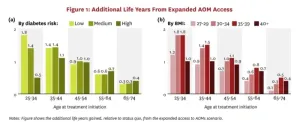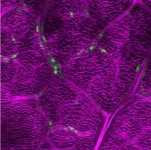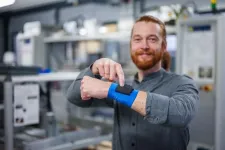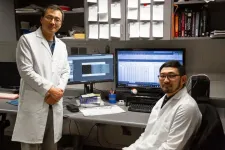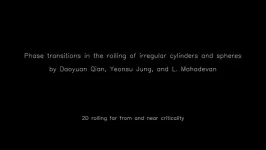Ottoman Empire’s religious ‘tolerance’ another form of control
Non-Muslim communities were recognized, given authority as way to monitor themselves amid Ottoman suspicions in wake of Greek revolt
2025-03-28
(Press-News.org)
Population surveillance. The carrying of identification while traveling. Add to that the public presence of diverse religions and it sounds like 2025, but this was life in the Ottoman Empire 200 years ago. Yet this seeming tolerance of non-Muslim faiths was in fact tied to the first two aspects, according to research by Osaka Metropolitan University Associate Professor Masayuki Ueno.
The Ottoman Empire lasted from around 1300 until 1922, and at various points in its history ruled present-day Turkey, Egypt, Greece, Hungary, and beyond. In the wake of the 1821 Greek revolt, the Ottoman Empire instituted several changes to maintain control over the population, especially in its capital of Istanbul. Internal passports were issued and surveillance was conducted not by infiltrating non-Muslim communities, including Greek populations, but by granting powers to those non-Muslim religious authorities to monitor their own people.
Behind the recognition of religions and the representation of non-Muslim religious authorities in the governing system was deep Ottoman suspicion, not a policy of tolerance, concludes Professor Ueno of the Graduate School of Literature and Human Sciences, an expert on the history of Christian Armenians in the Ottoman Empire.
“Uncovering this history helps form a bridge between what we know about the Ottoman Empire during two periods that have been studied separately, the early modern (16th to 18th centuries) and the modern (19th to early 20th centuries), in the context of a series of recent studies that have reexamined our understanding of the treatment of non-Muslims in the empire,” Professor Ueno explained. “I hope this will lead to further discussions.”
The findings were published in Comparative Studies in Society and History.
###
About OMU
Established in Osaka as one of the largest public universities in Japan, Osaka Metropolitan University is committed to shaping the future of society through “Convergence of Knowledge” and the promotion of world-class research. For more research news, visit https://www.omu.ac.jp/en/ and follow us on social media: X, Facebook, Instagram, LinkedIn.
END
[Attachments] See images for this press release:

ELSE PRESS RELEASES FROM THIS DATE:
2025-03-27
Banning smartphone and social media access alone fails to equip children for healthy use of technology, argues a group of international experts in The BMJ today.
They say the focus should shift to a rights based approach, underpinned by age appropriate design and education, that protects children from harm while developing skills to help them participate in a digital society.
Bans on smartphone and social media access have been advocated in many countries to protect children from harm despite ...
2025-03-27
Ikoma, Japan—In an era where climate change threatens food security, scientists worldwide are searching for reliable ways to improve crop production. Extreme weather and shifting seasonal patterns can disrupt traditional agricultural cycles, making technologies that regulate the timing of plant growth invaluable for farmers worldwide.
Plant growth and development are dependent on many factors such as the environment, photoperiod, and genetics. Flowering is an important event in a plant’s life ...
2025-03-27
A new USC Schaeffer Center white paper finds expanded access to anti-obesity medications would lead to significant increases in life expectancy and disease-free years while generating a substantial societal return on investment, even after accounting for treatment costs.
More than 4 in 10 U.S. adults have obesity, which is linked to increased risk of over 200 diseases — including heart disease, diabetes, cancer and dementia — and costs society $260 billion annually to treat. Highly effective new anti-obesity medications can be a powerful tool against chronic disease, but fewer than one-third of health insurers cover them amid concerns about upfront ...
2025-03-27
Ikoma, Japan—Throughout evolution, plants have continuously adapted to survive in changing environments. Apart from complex structural changes, plants have also developed various defense strategies against herbivores, including tougher protective layers, thorns, and chemical deterrents. Delving deeper into the evolution of defense mechanisms, a research team led by Assistant Professor Makoto Shirakawa from Nara Institute of Science and Technology (NAIST), identified a surprising genetic adaptation in the Brassicales plant order. In these cruciferous ...
2025-03-27
New York, NY — The American Federation for Aging Research (AFAR), is pleased to announce the 2025 recipients of three of its annual Scientific Awards of Distinction: David B. Allison, PhD, will receive the Irving S. Wright Award of Distinction; Daniel W. Belsky, PhD, will receive the Vincent Cristofalo Rising Star Award in Aging Research; and Arlan Richardson, PhD, will receive the George M. Martin Lifetime Achievement in Mentoring Award.
The Irving S. Wright Award of Distinction is named in honor of AFAR’s founder and recognizes exceptional contributions to basic ...
2025-03-27
RIVERSIDE, Calif. -- Vaping during pregnancy is becoming more common, but its impact on early human development is not well understood. A new study by scientists at the University of California, Riverside, now reports that the flavor chemical menthol used in electronic cigarettes could pose risks to a developing baby.
The study, published in STEM CELLS Translational Medicine, used human embryonic stem cells, or hESCs, to characterize early stages of embryonic development and examined how low concentrations of menthol affect important cellular processes.
The ...
2025-03-27
Clothes that can mimic the feeling of being touched, touch displays that provide haptic feedback to users, or even ultralight loudspeakers. These are just some of the devices made possible using thin silicone films that can be precisely controlled so that they vibrate, flex, press or pull exactly as desired. And all done simply by applying an electrical voltage. The research teams at the Center for Mechatronics and Automation Technology in Saarbrücken (ZeMA) headed by Professors Stefan Seelecke and Paul Motzki (Saarland University) and John Heppe (htw saar – University of Applied Sciences ...
2025-03-27
FAMU-FSU College of Engineering researchers have created a new method for studying protein degradation within immune cells that uses engineered microparticles to track and analyze degradation processes more effectively than traditional methods.
The work, which was published in ACS Applied Materials & Interfaces, has important implications for treating diseases such as cancer, Alzheimer’s disease and autoimmune disorders.
“There is a lot we still don’t know about how cells ingest and eliminate tissue debris or pathogens — the process ...
2025-03-27
How gravity causes a perfectly spherical ball to roll down an inclined plane is part of elementary school physics canon. But the world is messier than a textbook.
Scientists in the Harvard John A. Paulson School of Engineering and Applied Sciences (SEAS) have sought to quantitatively describe the much more complex rolling physics of real-world objects. Led by L. Mahadevan, the Lola England de Valpine Professor of Applied Mathematics, Physics, and Organismic and Evolutionary Biology in SEAS and FAS, they combined theory, simulations, and experiments to understand what happens when an imperfect, ...
2025-03-27
A team of researchers from Arizona State University, the U.S. Army Research Laboratory (ARL), Lehigh University and Louisiana State University has developed a groundbreaking high-temperature copper alloy with exceptional thermal stability and mechanical strength.
The research team’s findings on the new copper alloy, published in prestigious journal Science, introduce a novel bulk Cu-3Ta-0.5Li nanocrystalline alloy that exhibits remarkable resistance to coarsening and creep deformation, even at temperatures near its melting point.
“Our alloy design approach mimics the strengthening mechanisms found in Ni-based superalloys,” said Kiran Solanki, a professor at ...
LAST 30 PRESS RELEASES:
[Press-News.org] Ottoman Empire’s religious ‘tolerance’ another form of control
Non-Muslim communities were recognized, given authority as way to monitor themselves amid Ottoman suspicions in wake of Greek revolt


